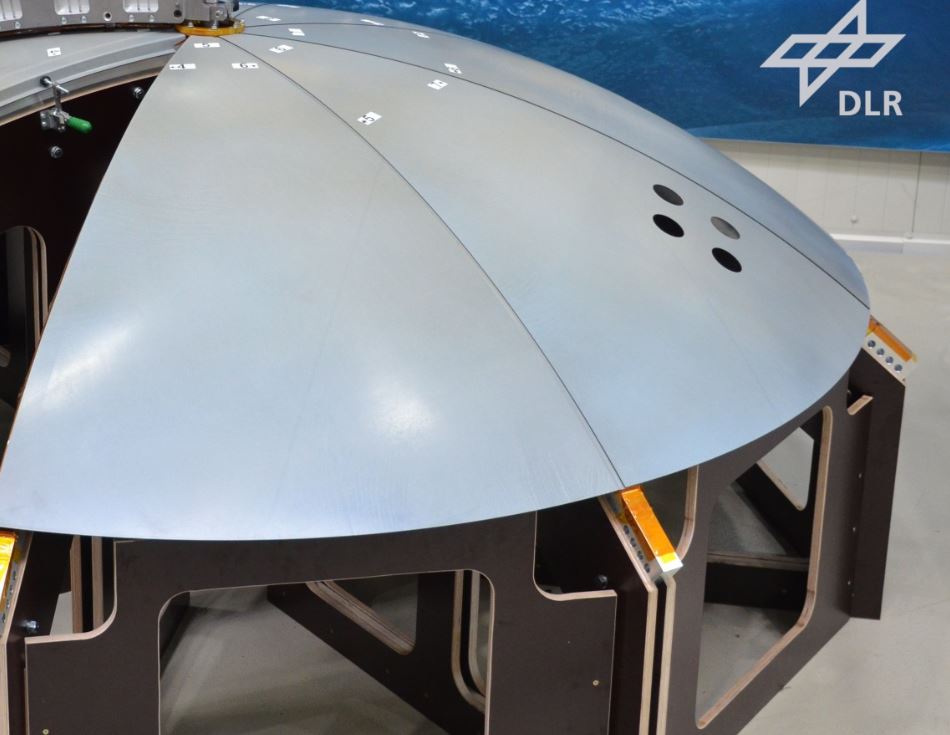Thermoplastic structural components for aerospace applications
Thermoplastic composite materials for structural aircraft components offer advantages in terms of performance, manufacturing processes and cost-effectiveness. The use of high-performance polymers and the high carbon fibre volume fraction of the laminates used lead to particular challenges in the processing. This applies to both thermoforming processes and welding technologies. These could replace the classic joining methods optimised for metallic materials, such as the riveting and the additional sealing required. Electrical resistance welding, ultrasonic welding and induction welding are promising methods that are increasingly being used for the joining of thermoplastic fibre composites in aviation.
Fast-lane project with Premium AEROTEC GmbH
A demonstrator component that has not been available in dimensions and three-dimensionality is the thermoplastic rear pressure bulkhead with three meters in diameter. It is manufactured at the DLR facility in Augsburg in cooperation with Premium AEROTEC GmbH. Eight thermoformed CF-PPS segments (manufactured at the Institute for Composite Materials in Kaiserslautern, made of laminates by TenCate) were joined with a Regatron 10 kW power supply and pneumatic pressure, using the electrical resistance welding process. The joining surfaces were each about 1500 millimetres long and 40 millimetres wide and necessitate a welding element in the intermediate layers, adapted to the process and component requirements.
Future prospects
The processes used to manufacture a pressure bulkhead offer the possibility of forming and joining fibre-reinforced thermoplastic laminates for large-scale aerospace applications. The design of the components and the weld seam shape is just as important as the selection of suitable process technologies. In addition to several years of process research and development, the storage and further use of quality-relevant data on user-friendly interfaces is to be further explored. This is indispensable for long-term quality assurance, complete documentation in production and, ultimately, an increase in cost-effectiveness.
German Aerospace Center (DLR)
Institute of Structures and Design
Dr. Ing. Stefan Jarka · E-Mail: stefan.jarka@dlr.de · DLR.de
